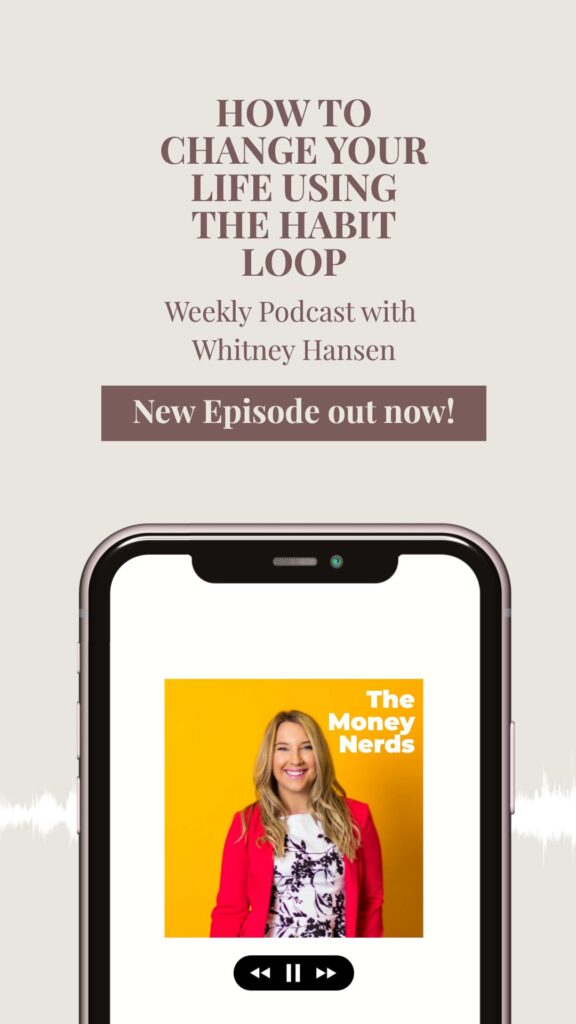Habits are routines of behavior that happen daily on a subconscious level.
They may seem small, but habits have a lot of influence and power in our lives — they can either move our life forward or backward.
How can you identify your habit loop and change it?
I recommend reading The Power of Habit by Charles Duhigg. It’s personally one of my all-time favorite books. It’s taught me a lot, and the information offered today is based on this reading.
According to the book, 46.9% of the time, we are working on autopilot. That means that almost half of our lives are based on inactive decision-making – autopilot actions or habits conducted subconsciously. The habitual decisions aren’t decisions we make actively; we do them without thinking about it. An example of this is driving to work. There are times that I’ve gone to work, and once I arrived at my destination, I couldn’t tell you or remember how I even got there in the first place. Most of us drive daily, so it’s become habitual – an action that we don’t have to think about.
Each and every one of us has something called habit loops.
A habit loop consists of the queue, routine, and reward.
1. Queue – This is where habits begin.
Queues have five different triggers: Time of day, emotional state, physical location, what you see, and who you are around. These variables can queue a routine for you, or in other words, trigger you to want to make an action.
An example of this is when I’d get an overwhelming feeling after seeing how many emails I had to address the moment I woke up. My trigger was an emotional state. Thus, the emotion of feeling overwhelmed would cause me to go into a routine.
2. Routine – This is what the trigger causes you to do in response.
Following the previous example, my response to feeling overwhelmed was to go to a coffee shop and grab some coffee. I told myself that it was the only way to deal with that emotion (although, I then realized it was more about the procrastination and the feeling of comfort I’d feel from it.)
3. Reward – This is what you reward yourself with due to the action you took in response to the initial trigger.
Again, following the same example, the cup of coffee would be my reward for essentially procrastinating.
After analyzing this specific habit loop, I realized my behavior was damaging me rather than helping me. I was rewarding myself and spending unnecessary money on coffee for procrastinating on work I had to do. I learned I had to change my reaction or “routine” to prevent myself from spending so much money on something I didn’t need.
Homework:
- Think of one specific habit loop in your life.
- Write down the queue, routine, and reward.
- Fill in the blank: When I “queue,” I will “routine” because it provides me with a “reward.”
Notice what you need to change to make better habit loops in your life to better prepare yourself for your future.
BONUS
Keystone habits trickle into other areas of your life – if you’re doing good in one area, it’ll compound and eventually help you do better in other areas of your life.
An example of a keystone habit is tracking your spending. It allows your brain to see what’s going on in your financial life. Doing this will help you know what and where you need to improve financially, and hopefully, inspire you to improve in other areas, such as fitness, health, etc.
If you wish to listen to the podcast about this topic, click on the video below.
In Conclusion
If you start to change your habit loops positively, you’ll see significant changes in your life.
You are in control of your life.
If you’re not happy with your habits right now, change either the queue, routine, or reward and change your loop.
Send me an email about what habits you’re going to work on. I love hearing from you guys!


Great post Whitney! I actually just ordered the book The Power of Habit, thanks to your post. I remember seeing it referenced many times but never bought it. You sold me on the “According to the book, 46.9% of the time, we are working on autopilot. That means that almost half of our lives are based on inactive decision-making – autopilot actions or habits conducted subconsciously.”
Yay! I’m glad to hear that. Hope you enjoyed the book!